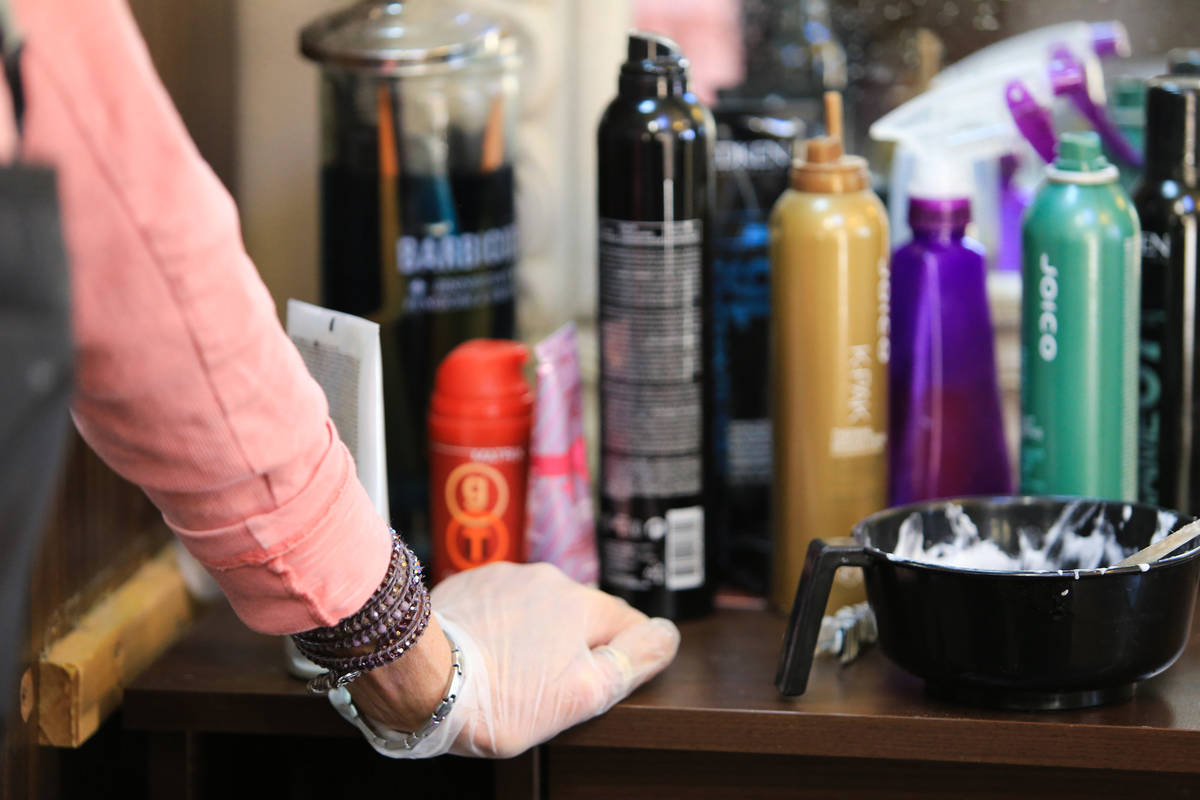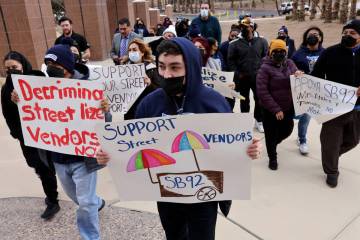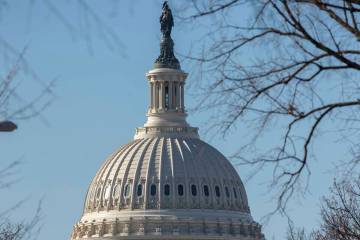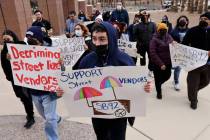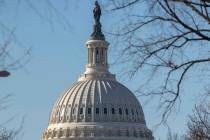COMMENTARY: New report shows ugly side of Nevada beauty industry
Flipping burgers lacks glamour, but part-time McDonald’s workers have at least one thing in common with master chefs at upscale Las Vegas restaurants. They all carry a food handler’s card, which anyone can get for $20 and almost no effort.
The government requires nothing else to work in a commercial kitchen. Regulators confine their involvement to oversight of public health and safety, which they mostly monitor by doing spot checks where food is processed. The government lets customers control everything else.
If diners don’t like the quality, service, atmosphere or price, they can go elsewhere. They also can share their experiences by posting online reviews on sites such as Yelp — creating potentially tens of thousands of citizen inspectors visiting Nevada food establishments every day.
Unfortunately, the rules change when someone wants to work in a salon. Instead of watching a few YouTube videos and taking a short test, Nevada cosmetologists must spend 1,600 hours in the classroom and pay about $20,000 in tuition and fees.
Nevada hair designers need 1,000 hours of training. Skin care specialists and nail technicians need 600 hours. Electrologists need 500 hours.
Nationwide, cosmetology remains one of the most widely and onerously regulated fields for lower-income workers. Even occupations more directly linked to public health and safety have fewer barriers to entry. Entry-level emergency medical technicians, for example, need about only 150 hours of training in Nevada.
Cosmetology schools appreciate the captive audience. “Beauty School Debt and Dropouts: How State Cosmetology Licensing Fails Aspiring Beauty Workers,” a new report published this week from the Institute for Justice (ij.org/report/beauty-school-debt-and-drop-outs/), shows how private institutions cash in while students accumulate sizable debt. The first-of-its-kind analysis uses federal data on cosmetology schools and cosmetologists nationwide from 2011 to 2017.
Overall, cosmetology students were more likely to take loans than the average student across all federal aid-eligible U.S. universities, colleges and vocational schools. They also borrowed more per year than the national average, and they were more likely to receive need-based grants.
The aid ultimately came from taxpayers, who funded about $1.2 billion in federal grants and loans to cosmetology schools during the 2015-2016 academic year.
The only voluntary participants in the scheme are the customers who go to cosmetology school salons for discount services. Keeping prices low is easy because students work without compensation.
The length of students’ service has little to do with the amount of instruction that needs to occur. Instead, cosmetology schools take as much free labor as the state offers. After Nevada lowered the mandatory hours from 1,800 to 1,600 in 2015, all cosmetology schools adjusted to match the new standard within two years.
Despite the reduced hours, cosmetology schools do a poor job graduating students on time. On average, only one in eight Nevada cosmetology students finished his or her program on time, and 75 percent of state cosmetology schools graduated no more than 2 percent of students on time during the study period.
Once cosmetologists clear the hurdles and start their careers, they often end up in low-paying jobs, making repayment of their loans difficult. On average they earn less than $20,000 per year in Nevada — less than many other professionals who face no state-mandated training.
Nevada must stop forcing beauty workers into this corner. State lawmakers could start by applying the restaurant model to salons. If the state forces cosmetologists to attend school at all, it should be only to learn about sanitation and safety.
Consumers already have proved that they can regulate everything else themselves. Cosmetology schools could survive. But to stay relevant, they would have to entice students with valuable instruction — just like culinary, art, music, auto mechanic, journalism and business schools.
Cosmetology is about beauty, but the current rules are ugly. No matter how the state styles it, forcing low-income students into debt is a bad look for Nevada.
Daryl James is a writer at the Institute for Justice in Arlington, Va.



